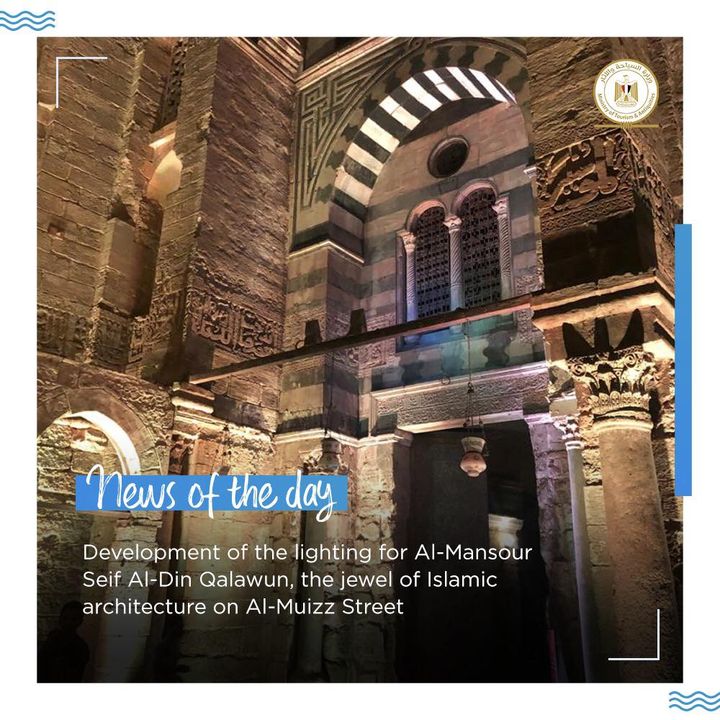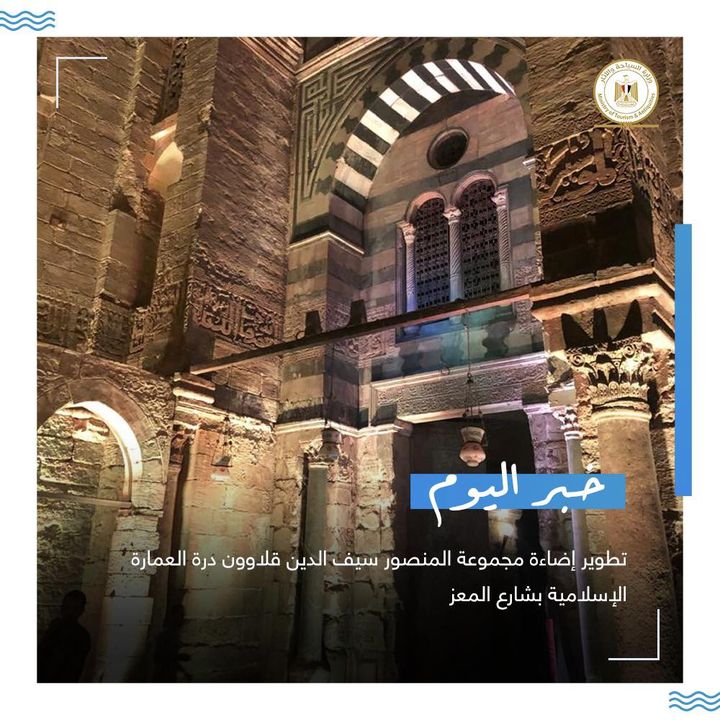وأوضح الدكتور اسامة طلعت رئيس قطاع الآثار الإسلامية والقبطية واليهودية، انه جاري العمل على اختيار وتحديد الكميات وألوان الإضاءة المطلوبة بما يتناسب مع إظهار العنصر الجمالي للمجموعة الأثرية.
جدير بالذكر ان السلطان سيف الدين قلاوون الألفي قام بتشيد تلك المجموعة فيما بين سنتي ٦٨٣ و ٦٨٤ هجرية (١٢٨٣-١٢٨٤م)، وتسمى مجموعة لأنها تشتمل على مجموعة مباني منها مدرسة للتعليم تستخدم أيضا كجامع، وقبة ضريحية، وبيمارستان لعلاج المرضى، وشيدت المجموعة على بقايا أجزاء من القصر الفاطمي الغربي الصغير المواجه لما كان يوما القصر الفاطمي الشرقي الكبير؛ لذا عرفت المنطقة ببين القصرين.
Upgrading the lighting system of Al-Mansour Seif Al-Din Qalawun, the jewel of Islamic architecture on Al-Muizz Street
Within the framework of the Ministry of Tourism and Antiquities plan to develop and present archaeological areas and sites properly, yesterday evening the work of experimenting with lighting the external facades of the Al-Mansour Saif Al-Din Qalawun began on Al-Muizz Street.
Dr. Osama Talaat, head of the Islamic, Coptic and Jewish Antiquities Sector, explained that work is underway to select and determine the quantities and colors of lighting required in proportion to the aesthetic element of the archaeological group.
It is worth noting that Sultan Saif al-Din Qalawun al-Alfi built that group between the years 683 and 684 AH (1283-1284 AD), and it includes a group of buildings, including a school of learning that is also used as a mosque, a dome and a mausoleum, and a bimaristan to treat the sick, and the group was built on the remains Parts of the small western Fatimid palace facing what was once the great eastern Fatimid palace; So, the area was known between Kasserine.
